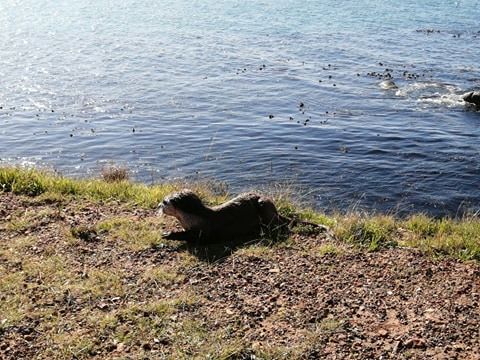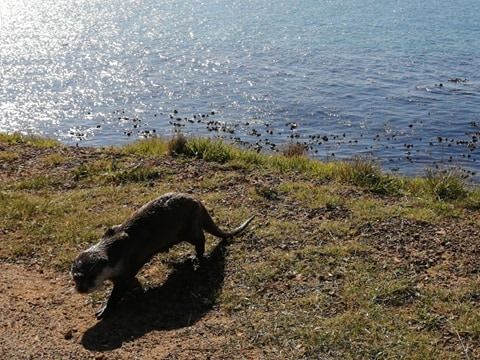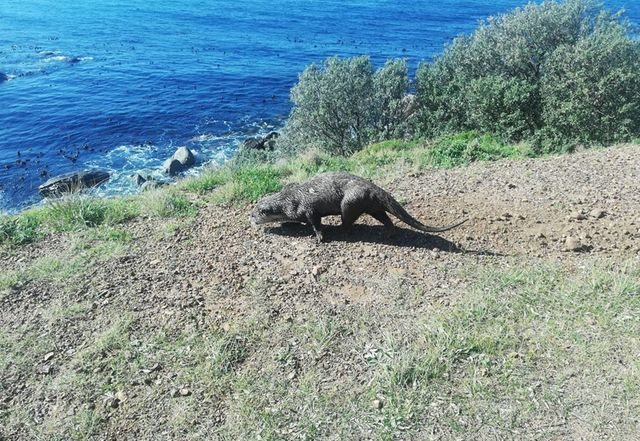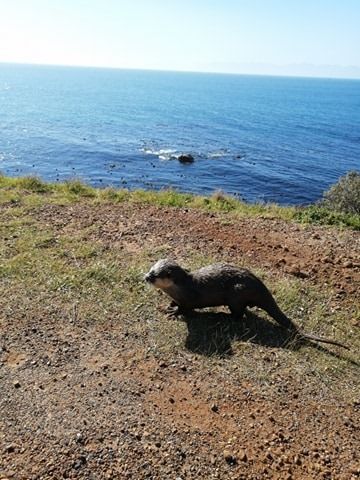There are a number of friendly, furry faces that call the Cape home. While sightings of caracals and whales are fairly common these days, another rare creature recently took centre stage.
Amy and Bremner Bruwer from Cape Town were lucky enough to spot a Cape clawless otter while on the way to Smitswinkel Bay on July 19. They stopped along the main road just past Simon’s Town when the otter popped up right in front of them.
“It seemed fearless and tried coming to us, but we clapped our hands so that it didn’t. It lay down and stayed for a while and then run back down to the sea and swam away,” Amy explains.
It was an exciting encounter for the pair, as they had never seen a Cape clawless otter before.




The Cape clawlesss otter, also known as the African clawless otter (Aonyx Capensi), is a robust animal that is both nocturnal and diurnal. It is the second largest freshwater species of water after the South American otter.
They are often found throughout sub-saharan Africa near bodies of water in surrounding areas, feeding on crabs, molluscs, fish, birds and a range of rodents and amphibians.
The world-famous Otter Trail, the oldest hiking trail in South Africa is named after these cheeky creatures. It traverses over 40km along the coastline between Storms River Mouth and Nature’s Valley and was established in 1868.
Unfortunately, their population is slowly decreasing and in 2014, Cape Clawless Otters were listed as near threatened by the International Union for Conservation of Nature (IUCN).
“Although this species has a large distribution they are restricted to areas of permanent fresh water, offering good shoreline cover and an abundant prey base. Thus while the distribution range is large the spatial size of their occupied habitats is much smaller and unknown, particularly due to the widespread habitat destruction and pollution problems reported for much of the African continent,” explain the IUCN.
The main threat to the species is the declining state of freshwater ecosystems in Africa. Climate change and increasing human/otter conflict for increasingly scarce resources such as water, land and fish may also impact on this species survival.
Pictures: Supplied

